
BLOG
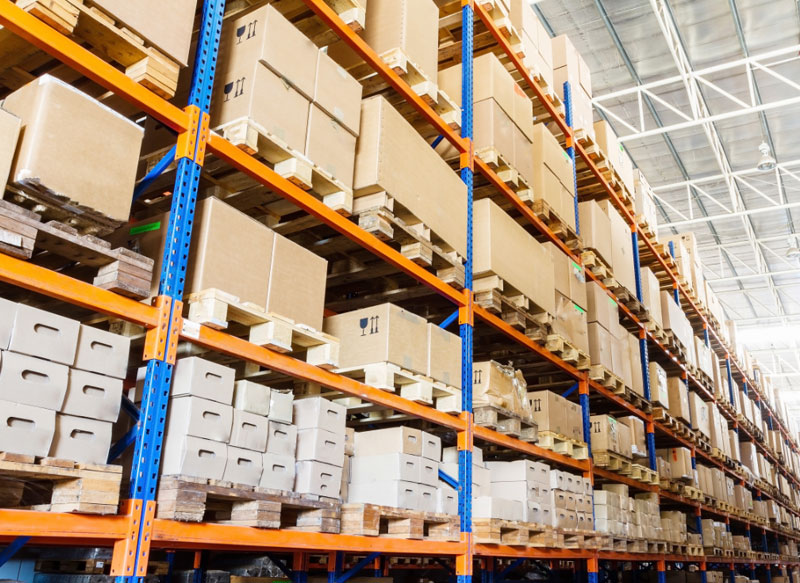
In today’s competitive and fast-moving world, suppliers and manufacturers across the globe are constantly under the pressure to deliver their products in the fastest possible time while keeping the costs under check. The primary goal of Supply Chain Management and hence Logistics is pretty straightforward – making the goods reach the destination from the source in the shortest possible time with minimal cost. However, the cost of the transportation of goods shoots up with warehousing, storing and handling costs. If you are looking for a logistics strategy where the products are undocked from an inbound truck and then docked onto an outbound truck for delivery, then cross docking might be the actual solution for your search.
Cross Docking is a genuine and reliable facility which helps save the seller money and helps the product reach the customer in time safely and reliably. Cross docking is a simple and cost effective method of transportation without the warehousing cost.
Because of cross docking the warehouse cost becomes nill as the consignment is unloaded from one truck and uploaded to the other truck which will take it to the right destination.
The customer benefits as he gets a cheaper product and the seller also benefits as his warehousing fee is greatly reduced. Thus cross docking is a win win arrangement for all the parties involved.
Cross docking is a new and unique way of transporting goods and consignments. It is less time consuming and also cost saving as the customer doesn’t have to wait long for the product and gets it cheaper as there is no warehousing cost involved.
In modern times cross docking has come out as a viable solution as it reduces the dependency of warehouses and ensures that the product is shipped fast and securely.
Many industries benefit from cross docking and all industries want to save on cost and maximize costs. Thus these industries can then depend on economies of scale and sell products at lower costs and still rake in profits.
This is made possible only because of cross docking which significantly reduces the warehousing costs and almost nullifies it.
Cross docking definitely appears to be a solution for expensive warehouse storage facilities and it is a safer and more economical alternative as compared to warehousing. This is the reason why most big industries are going for cross docking facilities rather than warehouse storage.
Surely in the times to come cross docking will play a major role in goods transportation and shipping and warehousing will slowly but surely be reduced to only a few good.
Cross-docking is a strategy that has been used in the logistics industry for more than a few decades now and is nothing new about it. However, the current market demands on the manufacturers and wholesale suppliers have brought back traction to this strategy and have kindled a ripple of interest amongst manufacturing giants who deal with the bulk volume of goods on a day-to-day basis to resort to cross-docking.
Cross-docking is a logistics procedure to distribute the products from the manufacturer or supplier directly to the customer (or retail chain) with very little and handling and storing. Generally, the materials from an inbound truck are unloaded and loaded directly into outbound trucks with little or no storage in between. This is predominantly done to channel the materials from one supplier to many destinations. The absence of warehousing and storing clears off all additional costs that crop up with it.
Different category of products requires different types of cross-docking services. To deliver products to the customers in time and when required, cross-docking facilitates speeding up of shipments. There are various diverse kinds of cross-docking to meet the necessities that arise in logistic services.
Cross-docking as a strategy helps in fulfillment of orders, timely and abolishes the practice of storing products. Excellent services of cross-docking would decrease errors and bring about efficiency and dexterity to businesses. The industry of supply chain acknowledges that there are many operational benefits which can be achieved by cross-docking.
1. Reduced Inventory Costs : Cross docking services eliminates the need for long-term warehousing, reducing inventory holding costs associated with storing products for extended periods.
2. Faster Delivery Times : By bypassing traditional warehousing and directly transferring goods from inbound to outbound transportation, cross docking services speeds up the distribution process, resulting in quicker delivery times to customers.
3. Lower Handling Costs : With streamlined operations and minimal storage requirements, cross docking services reduces handling costs associated with moving goods in and out of warehouses.
4. Improved Inventory Management : Cross docking services facilitates real-time inventory management by enabling rapid sorting and distribution of goods, enhancing visibility and control over stock levels.
5. Enhanced Supply Chain Efficiency : By optimizing transportation routes and minimizing storage times, cross docking services improves overall supply chain efficiency, leading to cost savings and improved customer satisfaction.
1. Increased Dependency on Transportation : Cross docking services relies heavily on efficient transportation networks and coordination between suppliers, carriers, and retailers. Any disruptions in transportation can lead to delays and operational challenges.
2. Higher Risk of Errors : The rapid movement of goods in cross docking services operations increases the risk of errors such as mislabeling, misrouting, or damaged goods, which can impact customer satisfaction and increase costs.
3. Limited Product Compatibility : Not all products are suitable for cross docking services, particularly those requiring special handling or storage conditions. Certain industries, such as pharmaceuticals or perishable goods, may face challenges in implementing cross docking due to product requirements.
4. Complex Coordination Requirements : Coordinating inbound and outbound shipments, managing inventory flows, and ensuring timely transfers require efficient communication and collaboration among multiple stakeholders, which can be complex and challenging to maintain.
5. Initial Investment and Technology Requirements : Implementing cross docking services systems may require significant initial investment in infrastructure, technology, and training to ensure seamless operations, which can be a barrier for some businesses.
Overall, while cross docking services offers significant benefits in terms of cost savings, efficiency, and speed, it also presents challenges related to transportation dependency, operational complexity, and product compatibility that must be carefully considered and managed.
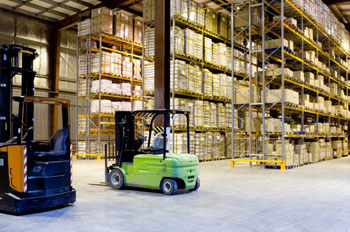
Hub and Spokes arrangement: In this method of Cross Docking, materials are brought from various sources into one central hub location. From the hub, the materials are sorted and then transported to a wide number of destinations. The Hub and Spoke cross docking arrangement has been successfully implied by a number of leading airlines across the length and breadth of the globe.
Consolidation arrangement: Here, a number of smaller shipments from the source are combined into one larger destination shipment. This arrangement works highly profitable when the transportation costs need to be kept under check with very little need for warehousing.
Deconsolidation arrangement: This is the reverse form of consolidation arrangements where the huge materials undocked from the source truck are broken into smaller lots. This makes delivery easy, faster and more precise.
1. Transportation Delays : Cross docking services relies heavily on efficient transportation networks. Any delays or disruptions in inbound or outbound transportation can lead to bottlenecks, affecting the timely transfer of goods and potentially causing customer dissatisfaction.
2. Inventory Mismanagement : Rapid movement of goods in cross docking services operations increases the risk of inventory mismanagement, such as mislabeling, misrouting, or misplaced items. This can result in inventory discrepancies, stockouts, or excess inventory, leading to financial losses and operational inefficiencies.
3. Quality Control Issues : The fast-paced nature of cross docking services operations may compromise quality control measures, leading to damaged or spoiled goods. cross docking services Without proper inspection and handling protocols, there is a risk of delivering subpar products to customers, damaging brand reputation and incurring additional costs for returns or replacements.
4. Security Concerns : With goods moving quickly through cross docking services facilities, there is a higher risk of theft, tampering, or loss during transit. Implementing robust security measures, such as surveillance systems and access controls, is essential to mitigate these risks and safeguard valuable inventory.
5. Compliance and Regulatory Risks : Cross docking services involves handling various types of products, each subject to specific regulations and compliance requirements. Failure to adhere to regulatory standards, such as food safety or hazardous materials handling, can result in fines, legal liabilities, and damage to the company's reputation.
6. Dependency on Technology : Cross docking services operations heavily rely on technology for inventory tracking, order processing, and communication between stakeholders. Any malfunction or failure of technology systems, such as barcode scanners or inventory management software, can disrupt operations and lead to delays or errors.
7. Seasonal Demand Variations : Fluctuations in demand, especially during peak seasons or promotional periods, can strain cross docking services operations, leading to capacity constraints and increased risks of inefficiency or errors. Adequate planning and scalability measures are essential to mitigate these risks and ensure smooth operations during peak periods.
8. Labor Shortages or Turnover : Cross docking services requires skilled labor to handle, sort, and process goods efficiently. Labor shortages or high turnover rates can impact operational productivity and quality, leading to delays, errors, and increased costs associated with training and recruitment.
9. Environmental and Sustainability Risks : Rapid transportation and handling of goods in cross docking services operations may contribute to increased carbon emissions and environmental impact. Companies need to consider sustainability initiatives and adopt eco-friendly practices to mitigate environmental risks and meet regulatory requirements.
10. Supplier and Partner Risks : Cross docking services involves coordination with multiple suppliers, carriers, and logistics partners. Any disruptions or failures in their operations, such as late deliveries or quality issues, can impact the overall effectiveness of cross docking services and jeopardize customer satisfaction.
Cross docking services Addressing these risks requires proactive risk management strategies, including robust quality control processes, investment in technology and infrastructure, compliance with regulatory standards, and cross docking services effective collaboration with stakeholders throughout the supply chain. Regular monitoring, performance evaluation, and continuous improvement efforts are essential to mitigate risks and ensure the success of cross docking operations.
Cross-docking has a number of potential advantages over other logistics processes. We list you the most important reasons on why one should actually consider cross docking –
Warehouses generally sprawl over a huge space of land and the floor space cost of warehouses is enormously high. With cross-docking, there is no warehouse and hence no warehouse and warehouse running cost. The warehouses are replaced usually by the cross-dock facility that takes only a fraction of the space that a warehouse would consume. Hence, cross-docking saves a huge penny with zero warehouses.

The amount of time the goods are stored at the cross-dock facility is minimal and therefore, the cost incurred in storing them is also minimal. Also, most of the cross-dock facilities are automated which brings down the cost of extra packaging too.
All the processes around material handling at the cross-dock facility like in-motion labeling, in-motion weighing, label verification, destination scan, etc are streamlined which improves the efficiency of the cross-docking process.
The absence of warehousing, reduced storage time, no packaging time and streamlined material handling: all these measures ensure that the products reach the destination (customer or retail chain) faster than the traditional methods.
All the arrangements in cross-docking like Hub and Spoke, Consolidated arrangement and Deconsolidated arrangement ensure the transportation cost and distribution cost when using cross docking services is drastically reduced. The trucks are usually loaded to be full to reach the destination so that the costs are always maintained at the minimum.
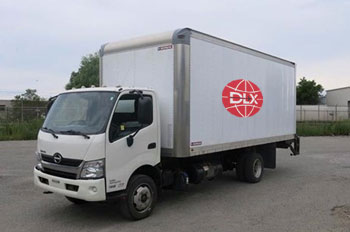
Cross-docking can be effectively used across all industries where faster delivery is required with minimal shipping cost. However, the following are the two industries that take the maximum benefit from cross-docking.
• Industries where temperature-controlled items like food and medicines that need to be transported as quickly as possible from the manufacturer to the end-customer or retailer reap the maximum benefit from cross-docking. The delivery time gets dramatically reduced through cross-dock service and the efficiency of the process is maximized. Also, the FMCG industry which deals with bulk transportation of pre-packed and sorted products is also greatly benefited by cross-docking as the amount of time that the products stay in the docking/undocking terminal is marginally very less.
• Apart from the industries that transport temperature-controlled items, cross-docking also works like magic for industries that move a bulk volume of materials on any given day. These bulk and big players also take the accuracy of the delivery very seriously which comes synonymously with cross-docking. The absence of storing and warehousing ensures the costs that come up with storing and warehousing are also marginally less or absent. This makes sure that the cost of transportation is kept well under check despite the bulk movement of materials and goods.
If you are looking for Cross Docking Services to speed up your logistics and mark a difference amongst your clients, we at Delivery Lane Express, offer professional cross docking services with exponentially faster delivery times and impeccable accuracy. We are an end-to-end logistics services company and our services include full-service trucking, warehousing, expedited trucking, courier services and same-day delivery services. Please get in touch with our representative to know more about our wide portfolio of services and our unbeatable pricing!
Cross docking services are commonly used in various scenarios where there is a need for rapid and efficient distribution of goods. Some common situations where cross docking services are employed include :
1. Just-In-Time (JIT) Inventory Management : Cross docking services is frequently utilized in JIT inventory management systems, where goods are delivered directly from suppliers to customers or retail locations without the need for storing them in warehouses. This helps minimize inventory holding costs and ensures that goods are delivered to customers precisely when needed.
2. Fast-Moving Consumer Goods (FMCG) Industry : Industries dealing with perishable or fast-moving consumer goods, such as food and beverage or retail, often utilize cross docking services to streamline distribution and reduce the time between receiving goods and delivering them to end customers. This helps maintain product freshness and meet high demand efficiently.
3. Retail Distribution Centers : Retailers often use cross docking to replenish inventory at their distribution centers or store locations quickly. By bypassing traditional warehousing processes, retailers can respond rapidly to changes in consumer demand, seasonal fluctuations, or promotional events.
4. E-commerce Fulfillment Centers : E-commerce companies leverage cross docking services to expedite the fulfillment process and reduce delivery times for online orders. Incoming shipments from suppliers are quickly sorted, processed, and dispatched to fulfill customer orders, enabling faster order delivery and improved customer satisfaction.
5. Consolidation and Deconsolidation of Shipments : Cross docking services is used to consolidate smaller shipments into larger ones for more efficient transportation or to deconsolidate larger shipments into smaller ones for distribution to multiple destinations. This optimization of transportation routes helps minimize transportation costs and improve supply chain efficiency.
6. Temperature-Sensitive Goods : Cross docking services Industries dealing with temperature-sensitive goods, such as pharmaceuticals or frozen foods, utilize cross docking to ensure that products are quickly transferred from temperature-controlled environments (e.g., refrigerated trucks) to their final destinations, minimizing the risk of spoilage or degradation.
7. Just-In-Case (JIC) Inventory Strategies : In some cases, cross docking services may be used as part of just-in-case inventory strategies, where backup inventory is strategically positioned in cross docking facilities to respond quickly to unexpected demand surges, supply chain disruptions, or emergency situations.
Overall, cross docking services are used in various industries and situations where there is a need to streamline distribution processes, minimize inventory holding costs, reduce delivery times, and improve supply chain efficiency.
Cross docking service offer a myriad of advantages, and one of the key benefits is the significant improvement in operational efficiency. Here's why businesses opt for Cross docking service to enhance their supply chain operations:
1. Reduced Storage Costs:Cross docking service eliminates the need for long-term storage of goods, leading to a substantial reduction in storage costs. By minimizing the time products spend in warehouses, businesses can save on rent, utilities, and other expenses associated with maintaining large storage facilities
2. Faster Order Fulfillment: The streamlined process of Cross docking service enables faster order fulfillment. Products move seamlessly from the inbound vehicle to the outbound vehicle, reducing the time it takes for goods to reach their destination. This speed is particularly crucial in industries where quick delivery is a competitive advantage.
3. Lower Inventory Levels: With Cross docking service, businesses can maintain lower inventory levels since there is no need to stockpile large quantities of goods. This not only reduces holding costs but also minimizes the risk of overstocking and obsolete inventory, allowing for better capital allocation.
4. Decreased Handling Costs: Cross docking service minimizes the handling of products compared to traditional warehousing. This reduction in manual handling translates to lower labor costs and a decrease in the likelihood of product damage. It contributes to a more efficient and cost-effective supply chain operation.
5. Improved Supply Chain Visibility: Implementing Cross docking service often involves the integration of advanced technologies like Warehouse Management Systems (WMS) and Transportation Management Systems (TMS). These technologies provide real-time visibility into the movement of goods, allowing for better tracking, monitoring, and decision-making throughout the supply chain.
6. Enhanced Responsiveness to Market Changes: The agility inherent in Cross docking service enables businesses to respond quickly to changes in market demand. Rapid order processing and reduced lead times mean that companies can adjust their inventory levels and distribution strategies in near real-time, staying competitive in dynamic market conditions.
7. Suitable for Time-Sensitive Products: Industries dealing with time-sensitive products, such as perishables or high-demand goods, benefit significantly from Cross docking service. The swift transfer of products ensures that they reach the market or end consumer quickly, reducing the risk of spoilage or obsolescence.
8. Streamlined Transportation: Cross docking optimizes transportation routes and minimizes the need for intermediary storage points. This leads to more efficient transportation, lower fuel consumption, and a smaller carbon footprint, contributing to environmental sustainability.
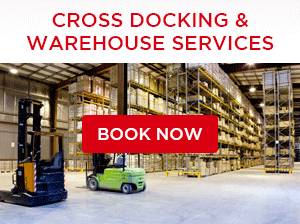


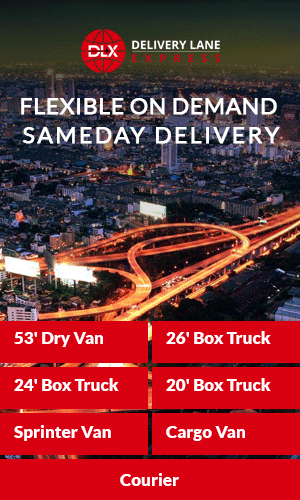
Copyright - All Rights reserved © Dlxpress
Powered by ITPL
